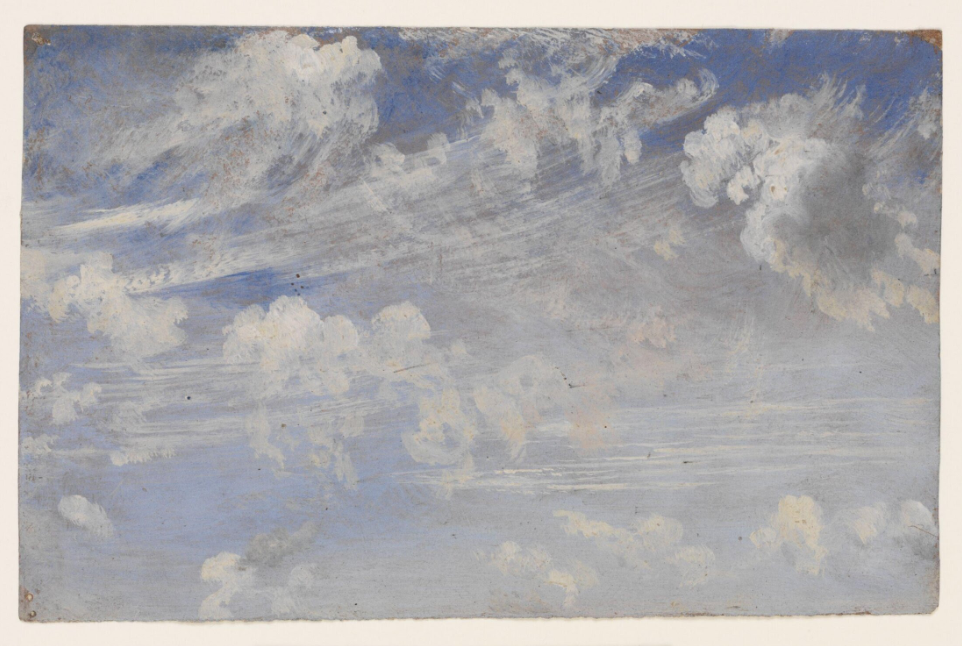Look closely at the image of the artwork Study of Cirrus Clouds by John Constable.
The following activities and questions are designed to help your students use their noticing skills to move through the poem and develop their thinking skills so they understand its meaning with confidence, using what they’ve noticed as evidence for their interpretations. Read more about the framework upon which these activities are based.
-
Warm-up: Join with a partner or small group and share: What emotions come up when you think about a new school year? Why? Share some ideas with your class. (Teachers, you may wish to create a list of these emotions.)
-
Before Reading the Poem: Look closely at the image of the artwork Study of Cirrus Clouds by John Constable. What stands out to you in this image? Why? What does this image make you think about? Why?
-
Reading the Poem: Silently read the poem “Mr. Grumpledump’s Song” by Shel Silverstein. What do you notice about the poem? Note any words or phrases that stand out to you or any questions you might have.
-
Listening to the Poem: Enlist two volunteers and listen as the poem is read aloud twice. Write down any additional words and phrases that stand out to you.
-
Small Group Discussion: Share what you noticed about the poem with a small group of students. Based on the details you just shared with your small group and the resources from the beginning of class, how would you describe Mr. Grumpledump? Why? Why might this be titled a song?
-
Whole Class Discussion: Now, reread the poem with Silverstein’s accompanying illustration. How does this image inform your understanding of the poem? Read about persona poems. What does this persona show us? How might you describe the voice in the poem?
-
Extension for Grades 7-8: Write your own persona poem. Try to include strong emotions that clearly portray your chosen person. Feel free to add an illustration to accompany your poem. Share your poem with the class.
- Extension for Grades 9-12: Read T. S. Eliot’s poem “The Love Song of J. Alfred Prufrock” or another persona poem. Write your own poem that responds to the poem you read. Share your poem with the class.
Known for his whimsical illustrations and verses about mischievous children, transformed adults, and strange monsters and beasts, Shel Silverstein published his second poetry collection, A Light in the Attic, in 1981. The book spent 182 weeks on the New York Times general nonfiction bestseller list and spent fourteen weeks in the number one spot. However, Silverstein’s books were accused of being not for children, encouraging bad behavior, and addressing topics some people deemed inappropriate for kids. The book was so contested that it became number fifty-one on the list of one hundred most frequently challenged books in the 1990s. Read more about banned books.
Persona poem: a poem also known as a dramatic monologue in which the poet assumes the voice of another person, fictional character, or identity.

